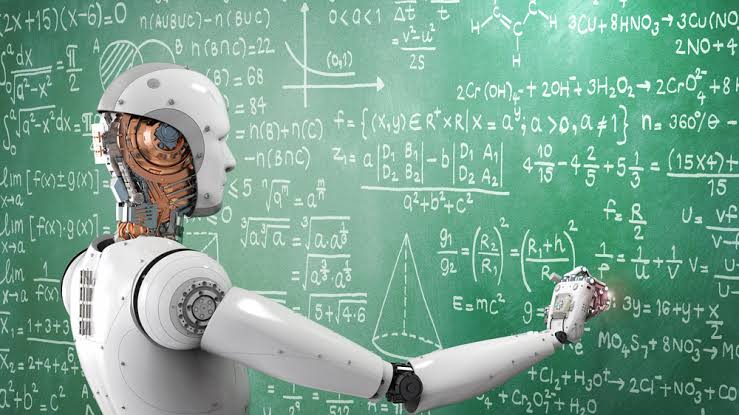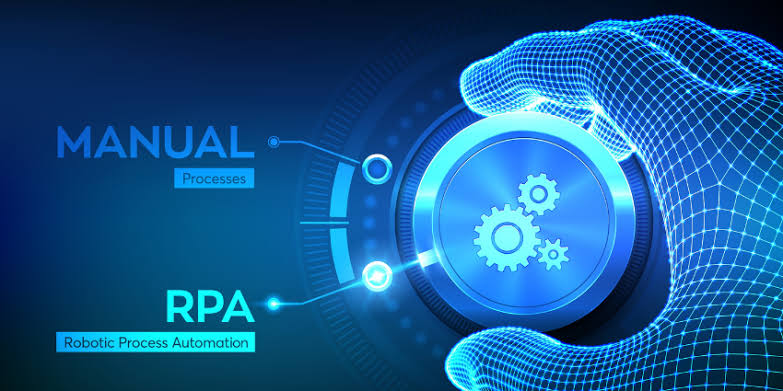
Education and Robotics: Preparing Students for a Robotic Future
Robotics is revolutionizing education by providing students with hands-on learning experiences in STEM fields. By integrating robotics into the curriculum, schools foster critical thinking, creativity, and technical skills necessary for future careers in technology. Robotics enhances engagement in the classroom, encourages problem-solving, and prepares students for a tech-driven job market.
✨ Raghav Jain

Introduction
As we navigate through the 21st century, the world is witnessing a rapid evolution in technology, and one of the most transformative developments is in robotics. Robots are no longer just tools of science fiction—they are part of our daily lives and are making a significant impact across various industries such as manufacturing, healthcare, logistics, and agriculture. With intelligent machines becoming more integrated into our professional and personal worlds, education must adapt to equip students with the skills they need to thrive in a robotic future.
In this article, we explore the role of robotics in education, how schools and universities are preparing students for a world where robots are commonplace, and the essential skills that will shape the next generation of innovators, creators, and leaders in robotics.
The Growing Influence of Robotics in Society
The adoption of robotics is accelerating across multiple sectors. From automated production lines in factories to surgical robots in hospitals, autonomous vehicles on the roads, and smart assistants in homes, intelligent machines are becoming ubiquitous. They offer solutions to problems ranging from labor shortages to precision, safety, and efficiency.
For students growing up in a world shaped by these technologies, understanding robotics isn’t just an option—it’s a necessity. The question arises: how can education systems prepare young minds for a future where robotics plays such a crucial role?
Why Robotics Education is Crucial
1. Robotics as a Catalyst for STEM Learning
Robotics serves as a powerful tool to ignite interest in STEM (Science, Technology, Engineering, and Mathematics) fields. By integrating robotics into the curriculum, students are exposed to a hands-on, practical application of these subjects. This encourages:
- Critical thinking: Students must solve real-world problems as they build and program robots.
- Creativity: Robotics challenges students to design, innovate, and think outside the box.
- Problem-solving: The construction and programming of robots often require troubleshooting and iterative learning, developing skills that are crucial in any career.
By working on robotic projects, students can see the connection between theoretical knowledge and practical application, fostering a deeper understanding of STEM subjects.
2. Preparing Students for Future Careers
As robots become more integrated into industries such as manufacturing, healthcare, logistics, and even education, there will be a growing demand for professionals skilled in robotics. Jobs in robotics will not only require technical knowledge but also creativity, problem-solving skills, and the ability to collaborate with AI systems.
By teaching students about robotics, schools are preparing them for a wide range of careers in:
- Robotics Engineering: Designing and building robots for specific applications.
- Artificial Intelligence (AI) and Machine Learning: Programming robots to think, adapt, and learn from their environment.
- Automation: Managing automated systems that improve efficiency and precision in various industries.
- Data Science and Analytics: Understanding how robots collect and process data to make decisions.
Key Elements of Robotics Education
Robotics education is more than just teaching students to assemble parts and follow instructions. It focuses on holistic learning that incorporates multiple fields, offering both technical and soft skills that will prepare students for the evolving job market.
1. Hands-on Learning with Robotics Kits
One of the most effective ways to teach robotics is through hands-on learning. Educational robotics kits, such as LEGO Mindstorms, VEX Robotics, and Arduino-based kits, allow students to build, program, and test robots in real-time. These kits introduce key concepts like:
- Mechanics: Understanding how robots move and interact with their environment.
- Programming: Teaching students how to code using block-based or text-based programming languages.
- Electronics: Learning about sensors, actuators, and power systems.
By working with physical robots, students learn the theory and application of robotics in an engaging and tangible way.
2. Robotics in the Classroom: From Basic to Advanced
Incorporating robotics into the classroom can begin as early as elementary school and progress through to college-level courses. The introduction of robotics education can start with basic concepts such as:
- Basic movement and sensors: Introducing students to simple robots that move in response to commands or environmental factors.
- Programming basics: Using visual programming tools to create simple actions and responses in robots.
- Advanced robotics concepts: As students advance, they can work on more complex projects such as building autonomous robots that interact with their environment and solve problems independently.
Through this tiered approach, students gain an understanding of both the hardware (the physical robot) and the software (the code that makes it work).
Integration of Robotics into Existing Curriculum
The integration of robotics into existing educational frameworks provides an interdisciplinary approach to learning. It allows students to explore subjects such as:
- Mathematics: Robotics involves mathematical principles like geometry (for movement), algebra (for programming), and probability (for decision-making algorithms).
- Science: Students can explore the principles of physics, especially when studying the mechanics of robots, the force of motors, and the behavior of sensors.
- Engineering: Robotics is inherently linked to engineering disciplines, offering students a hands-on understanding of the design, construction, and troubleshooting of systems.
- Technology: Students work directly with the technologies that power robotics, including computer programming and AI.
Project-Based Learning
Many schools and universities incorporate project-based learning in their robotics curriculum. Students are tasked with solving real-world challenges through robotics. Examples include:
- Building a robot to navigate a maze
- Designing a robot to complete a specific task in a factory setting
- Programming robots to assist in environmental monitoring
These projects enhance students' critical thinking and collaboration skills, and they gain practical experience that is directly applicable to real-world scenarios.
Robotics Competitions: Enhancing Learning and Engagement
One of the most effective ways to motivate students and foster collaboration is through robotics competitions. Events like FIRST Robotics, VEX Robotics, and World Robot Olympiad provide students with an opportunity to showcase their skills, work in teams, and solve challenges in a competitive setting. These competitions help students:
- Develop teamwork and leadership skills.
- Build resilience and perseverance through iterative design processes.
- Gain exposure to the wider robotics community, inspiring future academic and career pursuits.
Such competitions are not only educational but also exciting, pushing students to innovate and think creatively under pressure.
Challenges in Implementing Robotics Education
While robotics education offers numerous benefits, several challenges must be addressed:
- Access to Resources: High-quality robotics kits and trained instructors can be costly. Ensuring equitable access to these resources in all educational settings is essential.
- Teacher Training: Educators need specialized training to teach robotics effectively. Providing professional development opportunities for teachers will be crucial in the successful implementation of robotics programs.
- Curriculum Development: Integrating robotics into existing curriculums requires careful planning and development to ensure it complements other subjects and is accessible to all students.
Despite these challenges, the push for robotics education is gaining momentum, with schools and governments around the world investing in the necessary infrastructure and training.
The Future of Robotics Education
As robotics continues to evolve, education must evolve with it. The future of robotics education will likely include:
- Artificial Intelligence (AI) Integration: Students will not only learn about physical robots but will also develop skills in programming intelligent robots that can adapt, learn, and make decisions autonomously.
- Human-Robot Collaboration: Students will learn how humans and robots can work together, developing soft skills like communication, empathy, and collaboration in robotic environments.
- Ethics and Robotics: As robots take on more complex roles in society, students will need to understand the ethical implications of robotics. This includes questions about robot autonomy, privacy, and responsibility.
Conclusion
Robotics is more than just a technological revolution—it is a shift that will redefine how we work, live, and learn. To prepare students for a future where robots play a central role, education systems around the world must equip them with the knowledge, skills, and creativity to thrive in a robotic society.
By incorporating robotics into the classroom, emphasizing hands-on learning, and fostering collaboration, we can ensure that the next generation is ready for the opportunities and challenges presented by intelligent machines. Robotics education isn’t just about programming robots—it's about preparing students to be innovators, problem-solvers, and leaders in a rapidly changing world.
Q&A Section
Q1: How is robotics changing the landscape of education?
Ans: Robotics is transforming education by introducing hands-on learning experiences that engage students in STEM subjects, encouraging critical thinking, problem-solving, and creativity while preparing them for future technological advancements.
Q2: Why is it important for students to learn about robotics?
Ans: Learning about robotics equips students with essential skills in engineering, programming, and design, helping them develop a deep understanding of technology and its applications in various industries.
Q3: How does robotics enhance STEM education?
Ans: Robotics brings STEM (Science, Technology, Engineering, and Mathematics) concepts to life by offering practical experiences that enhance learning, foster collaboration, and motivate students to pursue careers in these fields.
Q4: How can robotics be integrated into the school curriculum?
Ans: Robotics can be integrated into the curriculum through dedicated robotics classes, extracurricular clubs, online platforms, and project-based learning, where students build, program, and test robots to solve real-world problems.
Q5: What role do robots play in classrooms today?
Ans: Robots in classrooms can assist in personalized learning, automate administrative tasks, and provide interactive experiences that enhance student engagement, making learning more dynamic and accessible.
Q6: How does robotics prepare students for future job markets?
Ans: Robotics prepares students for future job markets by developing technical skills, fostering adaptability, and encouraging a mindset of innovation, all of which are highly valued in fields like automation, AI, and engineering.
Q7: What are the challenges in incorporating robotics into education?
Ans: Challenges include limited resources, lack of trained educators, high initial costs, and a shortage of access to the latest technology, which can hinder the effective integration of robotics in schools.
Q8: How do robotics competitions benefit students?
Ans: Robotics competitions allow students to apply their knowledge in real-world scenarios, fostering teamwork, leadership, and problem-solving while also providing exposure to the competitive nature of the tech industry.
Q9: How can robotics encourage creativity and innovation in students?
Ans: Robotics encourages creativity by allowing students to design and build robots from scratch, experiment with new ideas, and find innovative solutions to complex problems, thereby cultivating a mindset of continuous improvement.
Q10: What impact does learning robotics have on students’ future academic pursuits?
Ans: Learning robotics enhances students’ academic pursuits by developing strong analytical skills, improving problem-solving abilities, and laying the foundation for advanced studies in fields like computer science, engineering, and artificial intelligence.
Similar Articles
Find more relatable content in similar Articles
Explore Other Categories
Explore many different categories of articles ranging from Gadgets to Security
Smart Devices, Gear & Innovations
Discover in-depth reviews, hands-on experiences, and expert insights on the newest gadgets—from smartphones to smartwatches, headphones, wearables, and everything in between. Stay ahead with the latest in tech gear
Apps That Power Your World
Explore essential mobile and desktop applications across all platforms. From productivity boosters to creative tools, we cover updates, recommendations, and how-tos to make your digital life easier and more efficient.
Tomorrow's Technology, Today's Insights
Dive into the world of emerging technologies, AI breakthroughs, space tech, robotics, and innovations shaping the future. Stay informed on what's next in the evolution of science and technology.
Protecting You in a Digital Age
Learn how to secure your data, protect your privacy, and understand the latest in online threats. We break down complex cybersecurity topics into practical advice for everyday users and professionals alike.
© 2025 Copyrights by rTechnology. All Rights Reserved.
